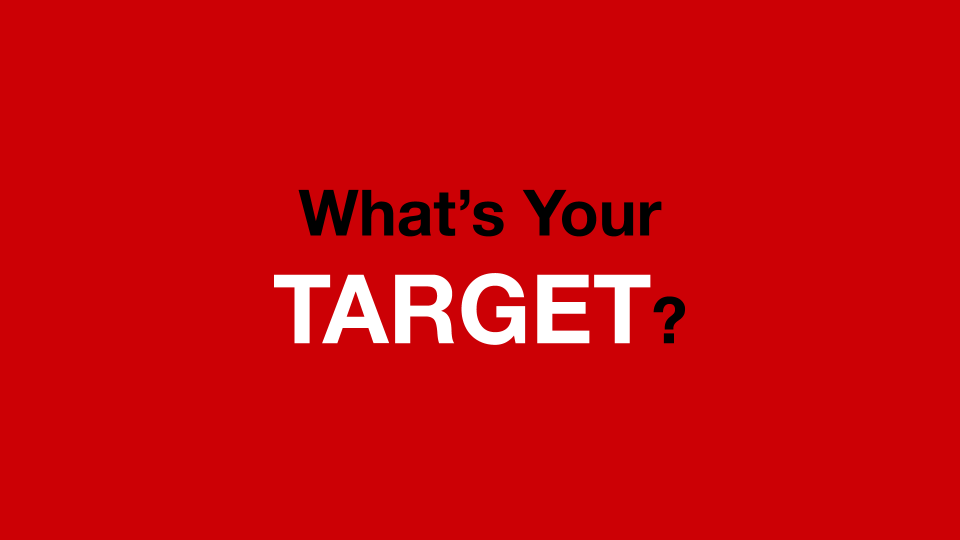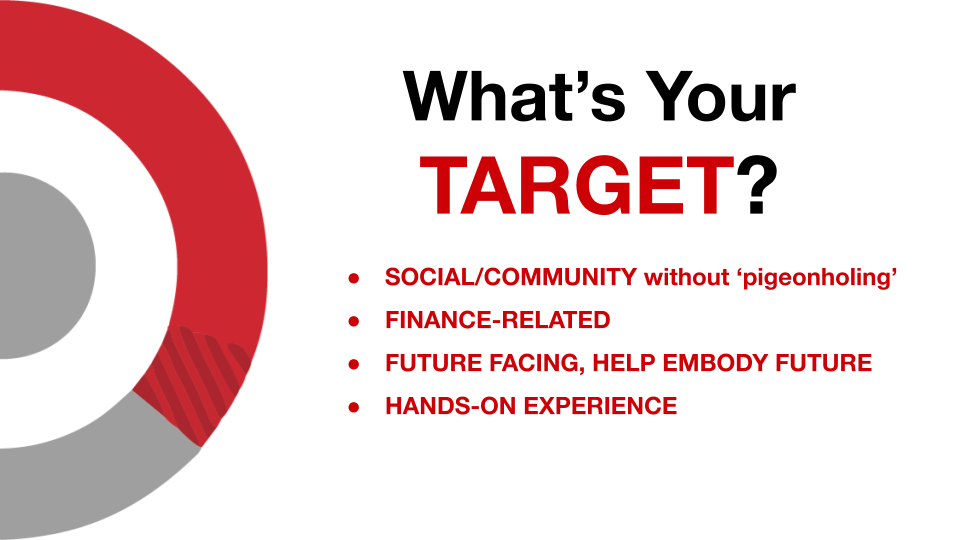
What’s your TARGET?
For TARGET
What’s your TARGET? is a future focused, community inclusive, hands-on experience that partners EBT (electronic benefit transfer) users with Target to pursue to their personal goals.
BACKGROUND: Partnered with Carolyn Sakstrup (Senior Vice President of Marketing, Target) in the class ME 216A: Advanced Product Design: Needfinding with Professor Dev Patnaik (Jump Associates, Wired to Care: How Companies Prosper When They Create Widespread Empathy) and Professor Ryan Baum (Jump Associates).
THE CHALLENGE: Target has discount programs, such as the Target RedCard, which are often unused by a target demographic, customers who are underbanked and unbanked. Research and design a solution that will help Target more effectively reach out to these underbanked and unbanked guests. Our team focused on EBT users. Present solution to a panel of UX industry leaders and Carolyn Sakstrup (Senior Vice President of Marketing, Target).
TIME FRAME: 4 weeks
THE TEAM: Noelle Chow, Savannah Murphy, and Christopher Huntley
OUR PROCESS
Electronic benefit transfer (EBT) is an electronic system that allows state welfare departments to issue benefits via a magnetically encoded payment card, used in the United States. Some individuals still refer to the program as “food stamps,” referring to the main way benefits were distributed up until 2008.
We started with extensive interviews with EBT users, from fa family of 6 (with one more on the way) to a medical student living on her own for the first time.
Two stories especially poignant stories stood out from Seth and Catherine.
Seth
Seth is an undergraduate student studying theater and performance studies. Growing up in San Diego, Seth’s family used EBT to shop for all their groceries. After leaving for college on full financial aid from the university, Seth cut ties with his parents to support himself independently.
When Seth was younger, his mom would take him to the store to do their weekly shopping in the “nicer neighborhood market” near his school. He recalls how his mom would find the shortest line so that nobody would see them using the EBT card. When asked about his full financial aid, Seth told us “he worked his ass off” to get into a good school and “earn” his financial aid.
Catherine
Catherine, a current EBT user, came to the Bay Area Rescue Mission when she became homeless and now works there as an intern.
Her first big job was to reviving a clothing bank for the people who come through the Mission. The Closet, and she called it, started as three small rooms filled with clothes that guests would peruse for items they needed. She was given some budget and clothing donation partners to work with. She first wanted to make The Closet a luxury boutique feel, with a comfortable waiting area and brand name clothes “especially for the teenagers… to help them feel just like everybody else.”
Like with Seth and Catherine, we noticed that our interviewees experienced and witnessed a range of positive to negative experiences with aid. Some experiences were empowering, while others were disempowering. Examining the quotes, we summarized characteristics about varying forms of aid using key descriptors of aid on both sides.
OUR LEARNINGS
FINDINGS
From Seth’s and Catherine’s stories, we summarized two findings that represented our interviews with EBT users.
FINDING
While EBT users avoided being publicly seen using certain types of aid (EBT, cash aid, food banks), they enthusiastically shared their involvement with other aid programs (financial aid, rescue mission).
FINDING
EBT users prioritize obtaining brand name items, describing them as symbols of being “just like everybody else.”
With these findings in mind, we started to see a trend of empowering aid vs. embarrassing aid, and we summarized characteristics about varying forms of aid using key descriptors of aid on both sides.
This framework allowed us to start to think deeper about how individuals’ needs are served using EBT and other services like food banks and shelters and financial aid. We developed an insight.
INSIGHT
The aid programs people find empowering build self-confidence, empowering users to embody a brighter future in their present.
Using this, we created a needs hierarchy, showing EBT stakeholders needs all the way from common needs shared by many in the country, all the way to specific qualifier needs for individuals on EBT in very specific situations.
We highlighted specific needs that we felt had both were most important to our EBT user group, as well as had the most room for Target to help. From here, we developed design principles to guide specifically how we would find a solution to these needs.
THE SOLUTION

What’s your TARGET? is a social goal-setting platform where users can tangibly visualize a goal (or TARGET) in their life.
Guests create a TARGET and finds items on the TARGET website that envision that future.
TARGET supports these goals by encouraging saving towards the future. TARGET matches 5%, the same discount as the TARGET RedCard.
Banked communities can set aside money inside the app, and unbanked communities can use this a tracker.
People can search and see other user’s TARGETs to gain inspiration.
What’s your TARGET? is a future focused, community inclusive, a hands-on experience.
What’s your TARGET? can also be an in-store experience.
In-Store displays about a popular TARGET Goal
Designed and created by teams of local guests
Get closer to your goal and inspire others
What might life looks like as a baker? A teacher? A doctor?
In the end, we studied the underbanked community of EBT users and got to know several incredible individuals. From these stories, we found that the best help EBT individuals can receive is future-focused aid that empowers, instead of embarrassed. From that, we designed principles that guided us in our design of the What’s Your TARGET? Program.







